“The right choice for your production”

Plastics circularity
Crude Oil Prices Trend
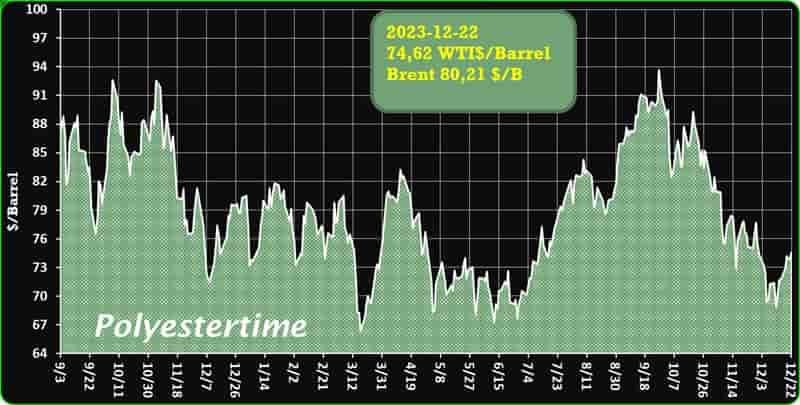
Crude Oil Prices Trend by Polyestertime
Batteries that charge twice as much: the invention of a start-up from the Polytechnic University of Milan
Exciting developments are emerging from the Polytechnic University of Milan, where a dynamic startup, Lyft Energy, founded by two visionary researchers, Eugenio Gibertini and Maurizio Sansotera, is revolutionizing the landscape of electric vehicle technology. The groundbreaking innovation lies in their ability to transform lithium metal batteries, renowned for their superior storage capacity yet traditionally considered disposable, into rechargeable powerhouses, effectively doubling their charging potential.
Lithium anode batteries, distinguished by a capacity ten times greater than those utilizing graphite or other metals, have long been hindered by their single-use nature. Gibertini and Sansotera, experts in applied physical chemistry and chemical foundations of technologies, respectively, have successfully devised an insulating film to impede lithium movement between the anode and cathode. Plastics circularity
This innovative film ensures that the battery remains functional even after multiple uses, addressing the disposability challenge.
The researchers entrusted the construction of the prototype to materials engineer Piergiorgio Marziani, whose initial results demonstrated remarkable promise. To expedite the industrialization of their invention, the trio welcomed Ground Control Holding as a strategic partner, acquiring a 10% stake in Lyft Energy.
The remaining ownership of this groundbreaking startup firmly rests in the hands of the visionary researchers, signifying a promising journey toward reshaping the future of electric vehicle technology. Plastics circularity
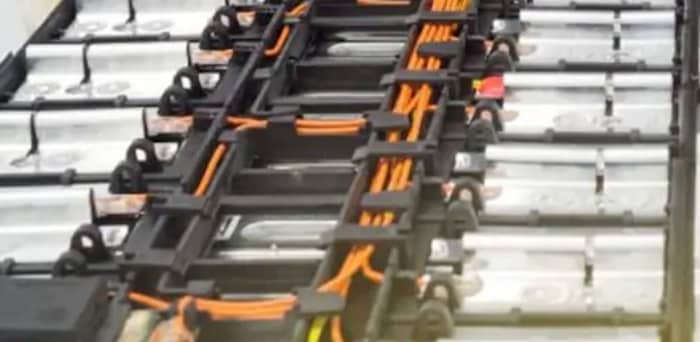
Environment could be in for a break after enzyme found that can devour plastic
Plastic pollution is a huge environmental challenge, contributing to the proliferation of extensive landfill sites across the world. Plastic does not degrade naturally in the same way wood rots or even metal rusts, meaning that once the material is discarded into the environment, its impact is felt for years. Less than 10 percent of plastic around the world is recycled.
To address this issue, scientists have discovered an enzyme which is capable of rapidly breaking down the polymer bonds within plastics. By breaking down plastics to a molecular level, landfill sites will significantly enhance their recycling capacity for these materials.
Polyethylene terephthalate or PET, is the plastic commonly used in consumer packaging such as water bottles, food packaging and many other types of containers, making it account for more than 10 percent of all global waste. Plastics circularity
Scientists in the United States, South Korea and the European Union are using machine learning to develop enzymes which can break down PET into smaller parts and then reform them. The enzyme is so efficient that some plastics could be broken down in as little as 24 hours. Plastics circularity
First discovered over 20 years ago in a pile of rotting leaves, naturally occurring bacteria use such enzymes to break down the cuticle wax on fallen tree leaves.
Usually plastics in landfill sites are simply burned to remove them. This process takes up a lot of energy and significantly pollutes the atmosphere with toxic waste. The alternative recycling process is also far from ideal, taking huge amounts of energy to break plastics down chemically in order to reform them in the recycling process.

INEOS Inovyn expands PVC portfolio; new products include NEOVYN range with reduced CO2 footprint, RECOVYN made from 100% recycled carbon feedstock, and the bio-attributed PVC BIOVYN
- INEOS Inovyn introduces NEOVYN, the new PVC range with a reduced carbon footprint meeting 2030 market targets on GHG reductions;
- BIOVYNTM, our current bio-attributed PVC, is optimised to progressively reach a carbon neutral footprint, becoming the net zero option;
- For circularity, RECOVYNTM completes the new Sustainable PVC Portfolio, for customers aiming to increase recycled content with PVC.
- “The new products we bring to the market will help our customers’ and business to jointly achieve our sustainability goals” says Arnaud Valenduc, Business Director of INEOS Inovyn. Plastics circularity
INEOS Inovyn has today announced the expansion of its PVC portfolio – to offer new products that meet society’s everyday needs, with a significantly reduced carbon footprint and increased recycled content.
In the area of carbon neutrality, BIOVYNTM, the bio-attributed PVC launched by INEOS Inovyn in 2019, is designed to become carbon neutral and the net zero option. BIOVYNTM has been used increasingly across various sectors from automotive, building and construction, to medical and fashion applications, where fossil-free solutions with a reduced carbon footprint are needed. Plastics circularity
To support customer targets for 2030 GHG reductions, INEOS Inovyn offers NEOVYN, which is a new PVC range with a significantly reduced carbon footprint that is 37% lower than the European industry average for suspension PVC (reduced to 1.3 kg CO2 per kg PVC).
NEOVYN will be produced from the many sustainable initiatives that INEOS Inovyn is pursuing, such as an increased access to renewable energy, process electrification and the production and use of renewable hydrogen. NEOVYN will become the new low carbon footprint standard enabling converters to progress on their carbon roadmap by reducing their Scope 3 emissions and offer low carbon footprint products to their customers.
More…
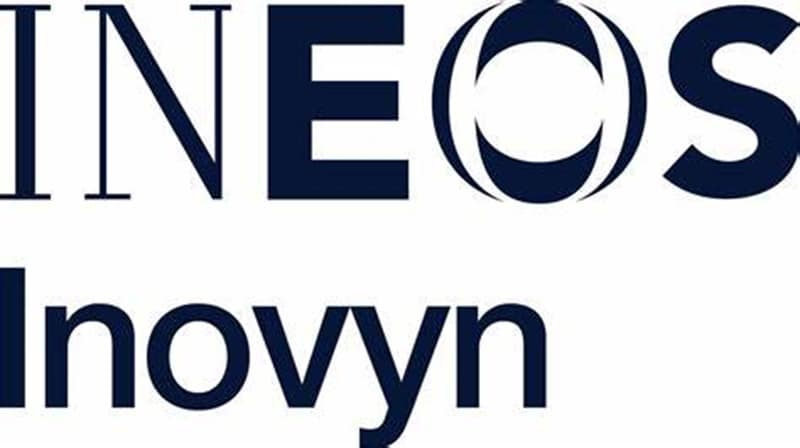
In the closing months of 2023, Italian industries are embracing a hydrogen-powered future with vigor, marking a significant stride towards cleaner processes
The impending three years will see pivotal utilization of public funds earmarked for territorial centers, primarily situated in derelict industrial zones. Notably, four projects have been unveiled in a single week, spanning from the north to the south of the country.
In Abruzzo’s Goriano Sicoli, an accord was inked between the municipal administration and Infinite Green Energy – IGE Italia, signaling the initiation of large-scale green hydrogen production in the Peligna Valley. Meanwhile, the Friuli Venezia Giulia Region has allocated 14 million euros for renewable hydrogen production in abandoned industrial areas. In Basilicata, the region boasts the highest renewable energy production and has received 12 requests for the production of renewable hydrogen. Plastics circularity
Looking southward to Lazio, the Frosinone industrial district is set for reconversion by 2026. The “HELIOS” project in Patrica, a collaboration involving ENGIE, Società Gasdotti Italia (SGI), and the Lazio Industrial Consortium, aims to become Central Italy’s largest electrolysis production center, with an investment of 20 million euros, partially financed by the PNRR “Hydrogen Valleys” tender.
This surge in interest aligns with European decarbonization goals, as articulated by President Ursula von der Leyen, who recently revealed authorizing over €17 billion in state aid for 80 hydrogen projects across the EU. The Lazio valley project, occupying a 10-hectare disused industrial area, is poised to rejuvenate the pharmaceutical sector, producing approximately 400 tonnes of green hydrogen annually through electrolysis of water using renewable energy. Plastics circularity
This initiative, developed in collaboration with the University of Cassino, signifies a modern power-to-gas plant, indicative of Italy’s commitment to hasten the transition to cleaner energy and enhance competitiveness for small and medium-sized businesses in 2023.
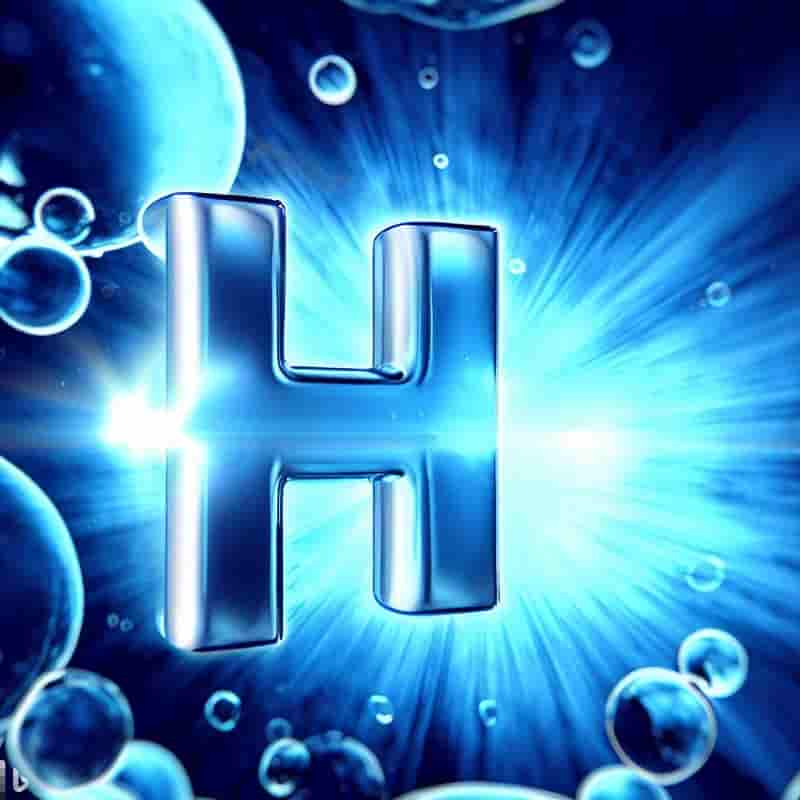
H2 Tank – First Cevotec system destined for Japan
FPP unit will be primarily dedicated to the production of H2 composite tanks with dome reinforcements.
Cevotec, the leading provider of automation equipment based on fibre patch placement (FPP) technology, is introducing the first FPP production system to the Japanese market.Fuji Industries, a specialised Japanese trading company in industries such as aerospace and high-tech equipment, has ordered Cevotec’s Samba Pro PV system which will be primarily dedicated to advancing H2 tank production with dome reinforcements which reduce the weight, cost and environmental footprint of composite tanks significantlyThe order follows a preview of Cevotec’s new Samba Pro PV FPP system dedicated to the production of reinforcements for hydrogen pressure vessels at the 2023 JEC in Paris. Plastics circularity
Fuji is committed to advancing Japan’s composites production capabilities and support the local industry with advanced technology solutions.“With FPP it is possible to reinforce the dome areas of type 4 hydrogen tanks which leads to significant material savings,” said Junji Yamada, president and CEO of Fuji Industries.
“This technology has the potential to establish a new standard in composite tank production – it enables us to support our customers with new automation options that they need to stay competitive.”In order to enable broad industrial and scientific engagement with the first FPP system in Japan, Fuji is planning to situate the system at a strategic R&D location accessible to relevant industry companies in aerospace and H2 and is well integrated in the Japanese composite research ecosystem. Plastics circularity
More…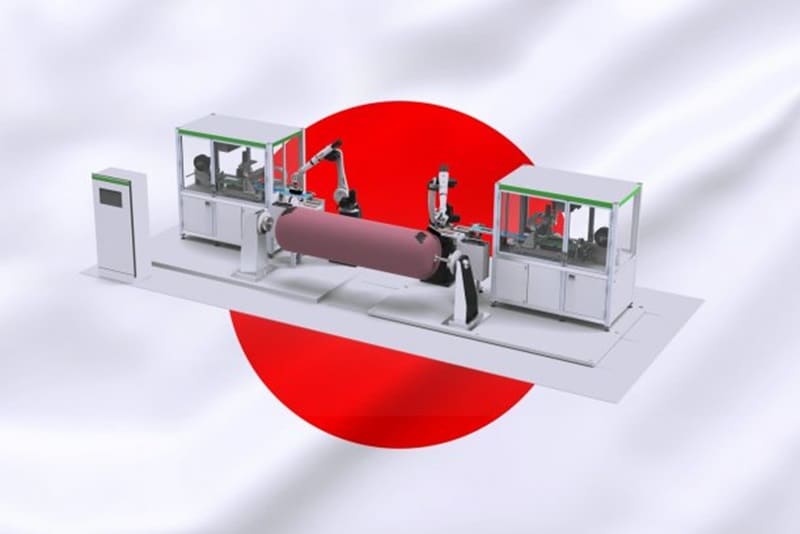
However, in 2023, global macroeconomic headwinds including recessionary fears became a real test for companies’ sustainability commitments. Plastics circularity
Overall low polymer demand across the key end-use industries with subsequent drops in virgin prices over 2023 made some companies (particularly those less exposed to consumer or regulation pressure) switch to low-cost feedstock alternatives. In the first half of 2023, this was virgin material. As a result, the existing record high prices for recycled polymers began to decline as well. While this may seem like a positive development as more brand owners might access more cost competitive recycled polymers, the long-term affect is likely to be adverse – disincentivising much-needed investments into building sorting and recycling capacity.
The current global mechanical recycling penetration rates (recycled polymer production divided by total polymer consumption) across the major commodities, such as polyethylene terephthalate (PET), polyethylene (PE) and polypropylene (PP), sits within 5-15%, according to the ICIS Supply & Demand Database and ICIS Recycling Supply Tracker – Mechanical. Despite a challenging 2023, production of mechanically recycled polymers is forecast to witness relatively strong growth supported by continuing consumer pressure, voluntary pledges and new legislation across the globe. Plastics circularity
However, if the current market trends continue and no major acceleration happens, ICIS does not expect those global mechanical recycling penetration rates to exceed 20% by 2050. The main reasons include not only the overall growth of polymer consumption, but also the existence of certain plastic applications, which are intrinsically challenging to be recycled mechanically (for example, flexibles or textiles) as well as stringent requirements for contact-sensitive applications (for example, food-grade recycled polyolefins).
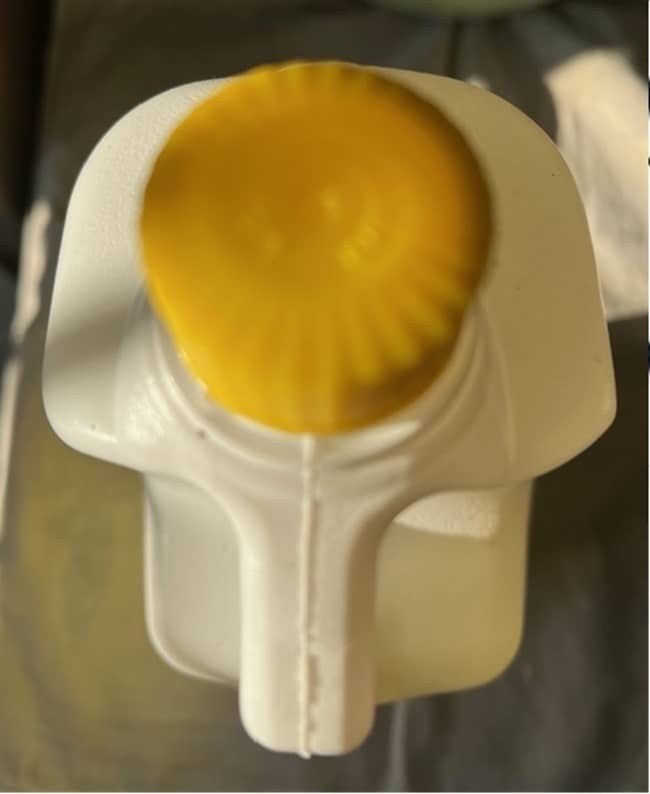
Boosting hemp fibre production in Texas
Panda Biotech has completed the construction and commissioning of the Panda High Plains Hemp Gin in Texas with the capacity to process ten metric tons of industrial hemp for textiles and nonwovens every hour.
In addition it will produce hurd, short-fibre hurd mix and a nutrient-rich co-product that will be pelletized. The facility is expected to be the largest hemp decortication centre in the Western Hemisphere and among the largest in the world. Plastics circularity
“Each piece of the Panda Hemp Gin production line, including the three miles of overhead pneumatic duct lines, refining, blending, mechanical cottonization, hurd bagging and baling must be individually started, checked, balanced, and commissioned,” says Panda Biotech executive vice president Scott Evans. “Currently, all equipment is individually being brought online to be officially placed in service.”
Using only renewable energy sources, the engineering and production process at the Panda Hemp Gin has been certified green by Mid-South Engineering Company, in accordance with the International Capital Market Association’s Green Bond Principles. Panda Biotech has also partnered with Oritain, a scientific traceability company, to bring the most traceable hemp grown 100% in the United States to market. Plastics circularity
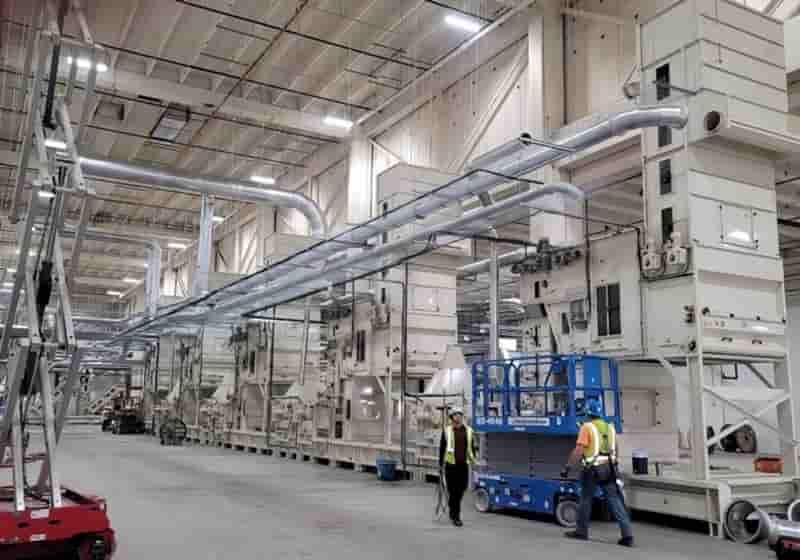
Green Hydrogen – APK is gearing up for the establishment of its expansive Newcycling® plant, marking a pivotal moment in the company’s strategic evolution 21-12-2023
Plastics circularity









